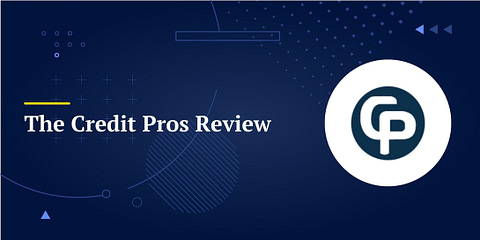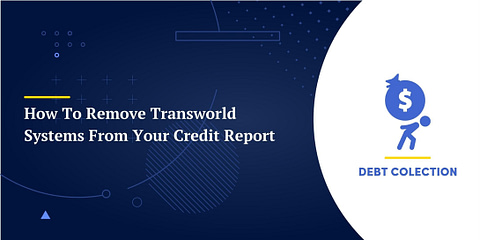Identity theft, a crime where someone impersonates you using your personal data for monetary gain, involves stealing your name, surname, passwords, Social Security number, address, phone numbers, email address, and details from credit cards, passports, ID, and driver’s license. This is the sensitive information you need to protect.
How can you prevent, recognize, and manage identity theft effectively? Let’s explore some basic things to know about this increasingly common crime and how to safeguard your identity.
Key Takeaways
- Regularly monitor your financial accounts and credit reports to quickly identify any unauthorized activity or discrepancies.
- Employ strong, unique passwords for online accounts and avoid sharing personal information, especially on public networks or platforms.
- Consider using identity theft protection services for enhanced security and timely alerts on potential threats to your personal data.
Is Identity Theft the Same as Identity Fraud?
These two terms are often used synonymously, but there’s a difference. Knowing that distinction can help you report the crime using the correct terminology.
Identity theft refers to the act of obtaining personal information that can be used for criminal activity.
Identity fraud refers to the use of that data for monetary gain: opening up a bank account, getting loans, creating a false ID, etc.
One crime leads to another: identity theft leads to identity fraud. Many people lump the two together under the general label “identity theft”.
Types of Identity Theft
Identity theft comes in many different forms. Common types include:
- Financial identity theft
- Medical identity theft
- Identity cloning
- Child identity theft
- Business identity theft
- Tax identity theft
The kind you’re dealing with depends on the targeted victim and the motivation of the criminal. All of them can do serious damage to your reputation and finances.
Let’s break down some common types to help you recognize them in a real-life scenario.
Financial
Identity theft is typically financially driven. Thieves target your credit cards, insurance, loans, and even savings accounts with the same goals in mind: to steal your funds or use your identity to borrow money.
👉 For example, someone might be watching over our shoulder when we’re at the ATM and bump into us while simultaneously pickpocketing our credit cards. Alternatively, the ATM could have a skimmer — a reader that collects PINs and credit card numbers – installed.
Another common scenario might be that a leaked Social Security number found on the internet leads to criminals applying for a loan or credit card in your name.
Criminals are skilled at using public sources to fill out a profile. Once they have one key item, like a Social Security number, they can fill in your address, phone number, or even your place of employment from public sources, social media profiles, etc.
They can use this information to gain access to financial accounts or open new accounts in your name.
Medical
Medical identity theft has been on the rise since the start of the COVID-19 pandemic. This happens when someone uses your data, such as your social security or Medicare number, to receive medical care at your expense.
Medical identity theft can affect your medical care, as a thief’s medical records can get mixed up with yours. It can also affect your credit score and your health insurance costs.
Health insurance information gives thieves access to your sensitive data, which they can use to pretend they’re you in other ways as well.
Identity Cloning
Even though it sounds like something from a science fiction movie, identity cloning is a real and dangerous crime. Instead of using your personal information for a one-time wire transfer or to cover medical expenses, the thief lives as though they’re you.
For instance, the criminal could use your personal information to build an entire identity. They could get a job under your name or even commit crimes while claiming to be you. Essentially, they would take over your identity entirely.
💡 Pro Tip: Social security identity theft is common and can lead to successful identity cloning. Don’t reveal your Social Security number to anyone who doesn’t have a legitimate reason to have it.
Children Can Be Targets
If a thief obtains a child’s Social Security numbers, address, or birth dates, they can open up accounts under the child’s name and even rent an apartment.
Child identity theft is extremely dangerous because it can go on for years without being noticed. Imagine turning 18, applying for your first credit card, and discovering that you have a decade or more of fraudulent accounts in your name!
This often overlooked issue can cost families a fortune — the estimated total is $918 million.
Businesses Suffer Too
Corporate identity theft happens when someone steals the identity of a business. For small businesses, this can threaten their survival, for large ones it can be very expensive. Like other types, the criminal impersonates the victim to damage a company financially.
👉 For example, by informing themselves about the employees and your company, the criminal could contact a member of your team pretending to be a manager or boss. The targeted employee may not think twice or even notice that the email has a different appendix and send them the credentials they’re after.
Once they get into the system, scammers can obtain more information to get credit or withdraw money from the bank in the name of the business. It may take some time before the theft is discovered.
Watch Your Taxes
For tax identity theft, a swindler uses your Social Security number to gain employment masquerading as you or file a tax return in your name. They may also claim your tax refund.
The first sign of tax identity theft often occurs when you submit a tax return and it is rejected because a return has already been filed using your name and Social Security number. The IRS may also notify you that you haven’t paid all of your taxes because someone else has been working using your Social Security number.
How Common Is Identity Theft?
According to the latest identity theft statistics, your odds of being victimized by identity theft are one in 200. In 2021, 1,434,698 people in the US were targets of some type of identity fraud.
This is a 68% increase in cases over the previous year. The number of incidents is continually growing.
People of age 30 to 39 are the most common victims. Most victims have also been people whose annual income is $75,000 or above. The reported loss has been over $20,000 per household. In the worst-case scenario, identity theft could cost these individuals almost half of their yearly income.
What’s even more concerning is that this crime can occur again if it happens once. So if you’ve been a target once, it doesn’t make you immune to similar incidents in the future. If anything, it means your information is circulating and you are more vulnerable.
How Does Identity Theft Happen?
Identity theft used to be a physical crime. The scammer would have to steal your wallet or break into your home to get your data. Many thefts still start with a physical theft, though now it’s often through “dumpster diving” – prowling through garbage looking for a discarded credit card or bank statements – or stealing statements from mailboxes.
Identity theft can also be virtual. Online theft has become a silent threat that you can’t see until you suddenly can’t access your credit card, as it leaves the hacker or scammer anonymous.
Most hacking attempts are not as tech-savvy as the movies lead us to believe. It doesn’t begin with writing code incredibly fast on a black screen and opening multiple tabs as you do it.
Instead, hackers start with a Google search. They try to find the information that’s readily available online.
You share your data on social media and when you sign up for many websites and services. Hacking forums, info dumps, and social media can give them enough data to copy your identity and choose you as the next target.
Once they have enough information, they can use it to log into your private accounts or access applications from your bank. They may also put your information up for sale through “dark web” websites.
How to Know if You’re a Victim
You might not know that you’ve been a victim of identity theft until you receive an alert from your bank regarding the activity on your account, notice strange transactions, or receive a thank you note from your credit card company in your email.
⚠️ Common signs include:
- Accounts on your credit report that you didn’t authorize.
- Activity on your card, including unknown transactions and missing bills.
- Bills or statements you normally receive in the mail don’t arrive. A thief can redirect them to a different address.
- Credit report under your child’s name and Social Security number. Children under 18 wouldn’t have it unless they’ve been involved in a case of fraud (you’ll need to check).
- Bills from medical institutions that you don’t recognize.
- Unauthorized access to your devices. You may notice activity such as moved or deleted emails
- Calls from credit card companies reminding you of accumulated debts
- A credit card that is declined or applications for new accounts rejected.
Be alert, and don’t discard suspicious activity. Even small unfamiliar transactions on your credit card or an unrecognized hard inquiry on your credit report can point to criminal activity.
👉 Learn more about the signs of identity theft here.
What to Do If You’re a Victim of Identity Theft
If you think you’ve been a victim of identity theft, don’t wait. If you act quickly there’s a good chance of resolving the situation and recovering your losses. The longer you wait, the harder it gets.
You’ll need to go through a sequence of reports and other steps to resolve and recover from identity theft.
👉 Read about what to do if you’re a victim of identity theft.
What Does the Aftermath of Identity Theft Look Like for Victims?
The exact consequences will differ depending on the type and extent of the identity theft. Recovery can be a long process that includes proving the fraud and possible legal action. It can take up to six months for victims to recover financially.
Damage is, in most cases, financial. Still, bad credit after identity fraud is not necessarily going to happen to you, especially if you prove that you’ve been a victim of identity fraud and get a refund.
Besides suffering financial damage, victims can also experience poor mental health long after the incident. Former victims of identity theft report that this crime has left them with long-lasting psychological consequences.
Identity thieves are rarely caught, and victims don’t have the closure that comes with knowing who committed the crime and why. They also have to deal with the knowledge that their personal information has been compromised and may still be in the hands of other thieves.
Keep Calm and Prevent Identity Theft
Identity theft is a threat, but that doesn’t mean you should panic. Most people never experience identity theft. The key to controlling your risk is taking active steps to prevent identity theft and make yourself a harder target.
Like most criminals, identity thieves prefer easy targets. Following basic precautions won’t make you immune to identity theft, but it will put the odds in your favor. You’ll be a harder target and you’ll spot the theft fast if it happens.
💡 Pro Tip: Reduce your chances of identity theft by opting for an identity theft protection service.
Final Word
Thinking about identity theft is like a Stephen King horror story unfolding in our minds. Your finances, your mental health, and even the reputation of your business might be at stake.
It’s good to be cautious, but there’s no need to panic. Identity thieves may be unseen and mysterious, but they are not some supernatural threat. You can take preventive measures to protect yourself, and if you stay alert you can stop them before they do serious harm!























